Is the long-term commitment one of the reasons you haven’t tried a CSA subscription yet? Most of us are gone from home at least a week or two during the summer. And most farmers understand that. While some CSA’s offer options to skip a week or donate your box, they all allow you to give your box to friends or family.
The funny thing is I’ve tried to do this many times. And it’s surprising how hard it is to give away $50 worth of the best fresh fruits and vegetables money can buy. (In fact, the same foods of lesser quality would cost more in the grocery store.) So when I got what remained of my box after my parents picked it up, I was excited to see my mom had used five of the 15 items.
So here’s what I had left for the week:
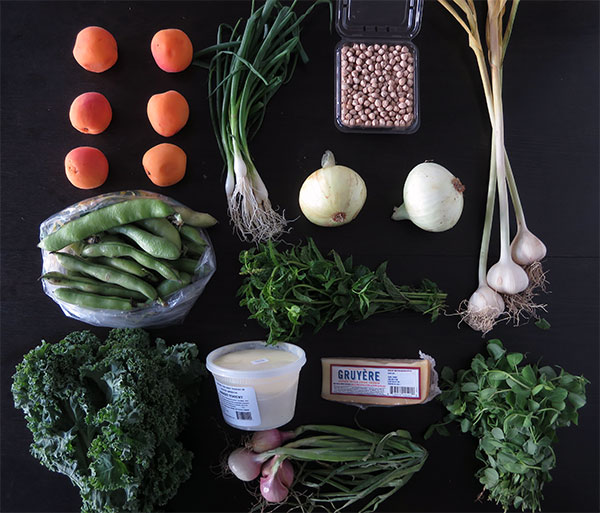
Local Raspberries and Other Summer Fruits
I can never eat enough raspberries in summer. So the same Sunday I got my CSA box, I also went to the farmers market. I eat as many meals as I can with fresh fruit, and freeze whatever might go bad before I get to it. (Notice this means anticipating something will spoil, not waiting for it to happen.) Fruit is versatile—try it in salads, breakfasts and desserts.
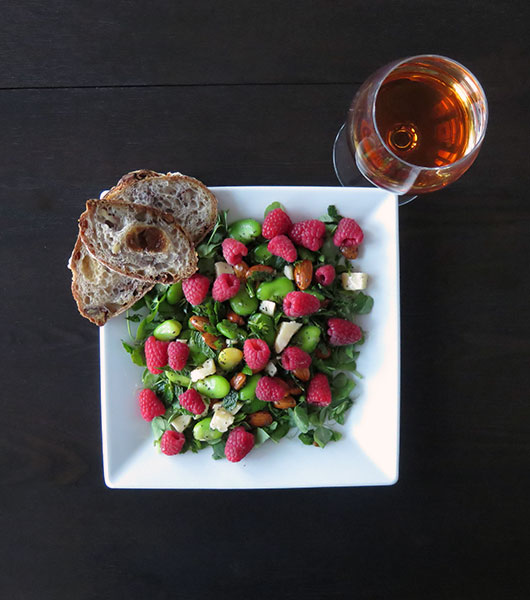
Fresh fava beans are one of my early summer favorites. But they have a reputation for being too much work, with both shelling and peeling stages. Do it once and it’s no big deal. First, remove the pods. The favas will look like this:
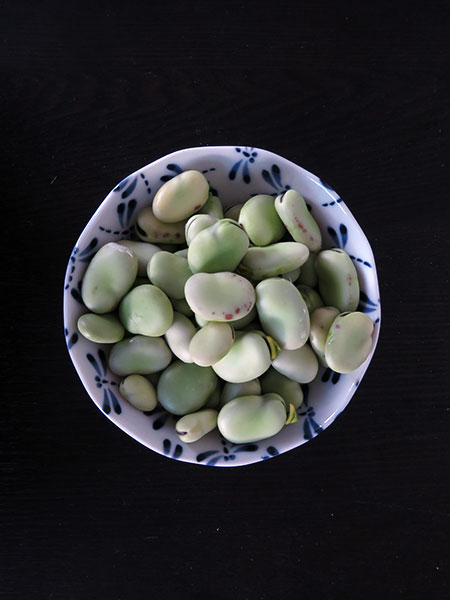
Then blanch the shelled fava beans in boiling water for a minute and drain. They will be easy to peel by cutting a slit with a knife or using your finger nail. After that, they are ready to eat—no more cooking needed. Note that peeling is not required. The skins are thick though and peeled favas are a beautiful bright green color. Whichever way you go, the yield is small. I always use them in dishes where they stand out, like this salad or this combo plate.
For breakfast, fresh fruit makes toast and hot cereal special.
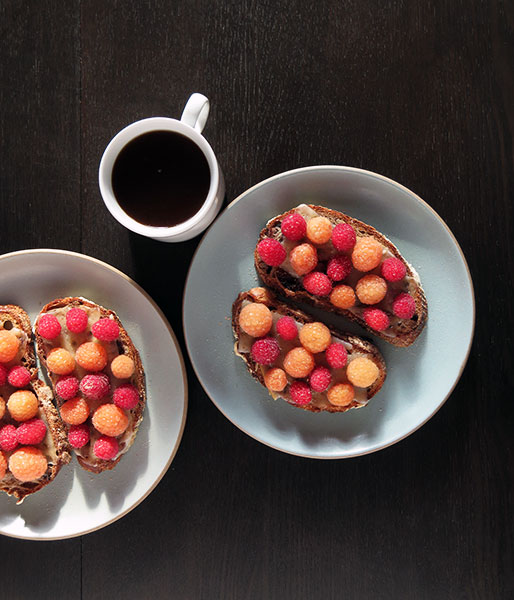
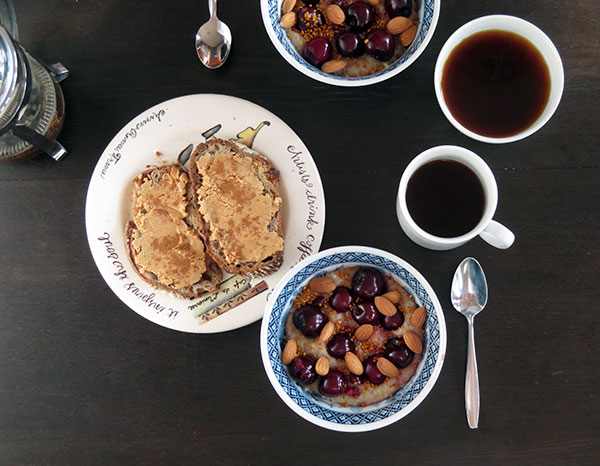
And because you can never have too many dessert ideas:

The best is when you can take dessert and turn it into breakfast. I like fresh apricots but they are most flavorful when cooked. I tossed apricots and bing cherries with cornstarch and almond extract before roasting. On it’s own, this is enough for a delicious end to the meal. Still, I made a simple crisp topping by rubbing together rolled oats, brown sugar, salt and butter. I served the baked fruit with fresh, local raspberries and the cream layer from the top of my yogurt. A dessert worth this minimal effort. Especially when this was breakfast the next day:
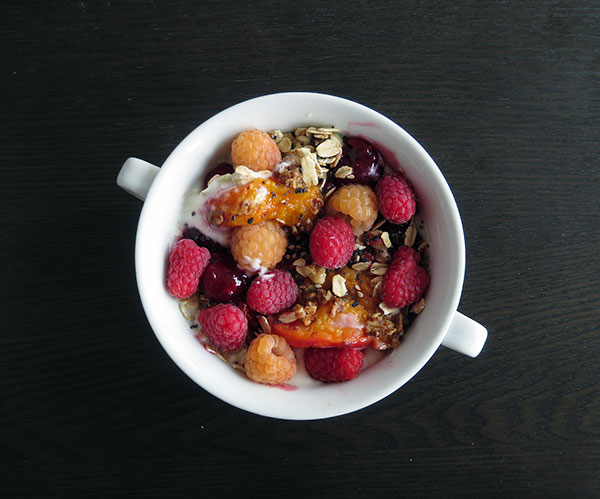
For more specifics about making crisps, watch my rhubarb crisp video.
How About Leafy Greens?
You knew that was coming. I can hardly believe I haven’t posted about grits, greens and eggs since December. Well, clearly I was overdue.

For more ideas, read my posts from Weeks 1 and 2 here: leafy greens and more greens.
But Are You Expecting Flatbreads?
In another surprising turn (to me), I haven’t posted much about flatbreads either. Surprising because I’m turning to flatbreads more and more. Flatbreads are a great compromise between bread and crackers. For minimal work compared to either one, they yield delicious results. They’re also an easy place to get started with yeast baking.
This week, I followed the flatbread recipe on my bag of chickpea flour (a new ingredient for me!). A filling meal when combined with the haloumi I always keep in the fridge.
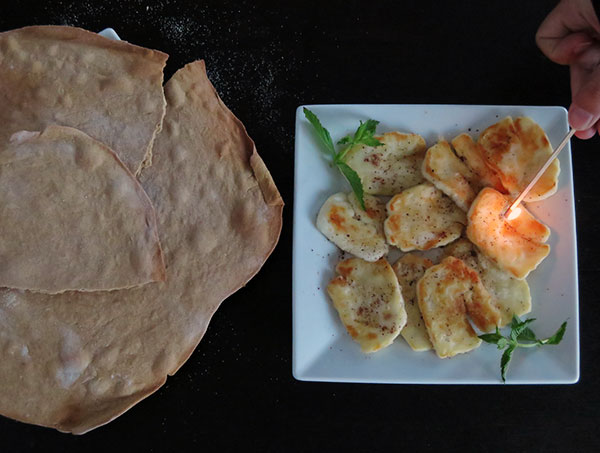
Leftover flatbreads can be reheated in the oven or toaster oven. They are more cracker-like but still good. I took a no-food-waste approach to this lunch:
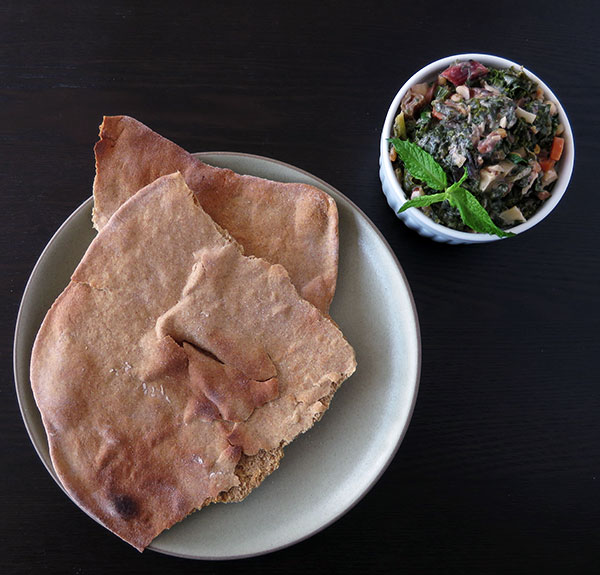
That Old Standby Pasta
These two meals are almost at opposite ends of the spectrum. The first is a refined recipe. The second was thrown together from scraps destined for the compost bin. Yet, both were simple and delicious. For more pasta ideas, read almost any post on this blog. But this one’s an overview on adding vegetables to pasta.
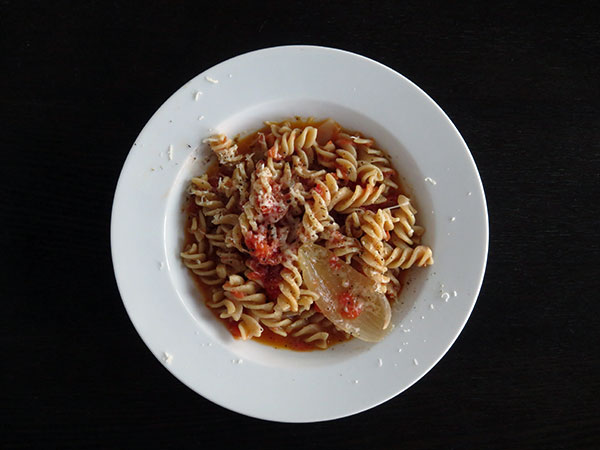
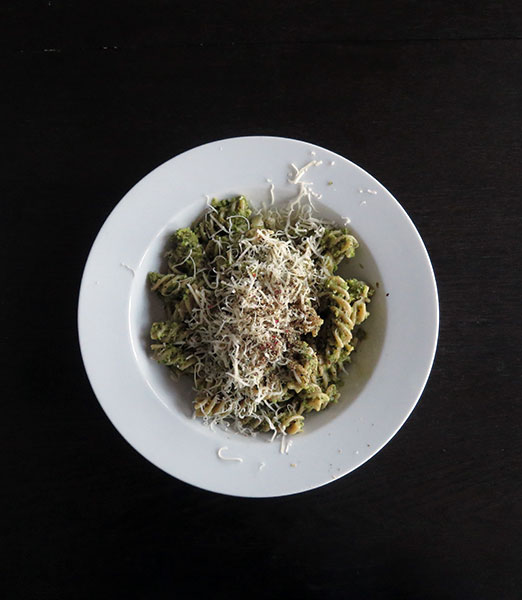
A small confession here. I don’t love pea shoots. Does this sound minor to you? Well I have a personal goal to like everything—or everything plant-based anyway. (Cilantro, I can finally say I couldn’t live without you.) It’s not that I don’t like pea shoots. The leaves are quite tasty. It’s the stems that I can’t ever seem to enjoy. And I find it impossible to get excited about a food when I throw more than half of it out. But with this puree, I can finally look forward to more pea shoots. The point is, if you don’t like the flavor of something, keep trying it. My husband learned to like olives this way. If you don’t like the texture of something, then change it. À la pea shoot puree.
The End of The Week (But Only Four Days Later)
You might have noticed that a lot of the ingredients in these meals didn’t come from my CSA box. Remember I was gone for part of the week. My mom used some of the most perishable ingredients: the fruit, cucumbers and lettuces. With a variety of alliums and even dried legumes, it was a low-pressure week for perishability. And at the end of it, quite a few items remained:

So now the pressure is on for next week.
EXPERIMENT WITH SEASONAL INGREDIENTS AND TRY NEW RECIPES WITH KITCHENLISTER. CREATE A FREE ACCOUNT NOW.
If you’d like more information about any of these July CSA meals, leave me a comment.
Read more about my “Week in Review” posts.
